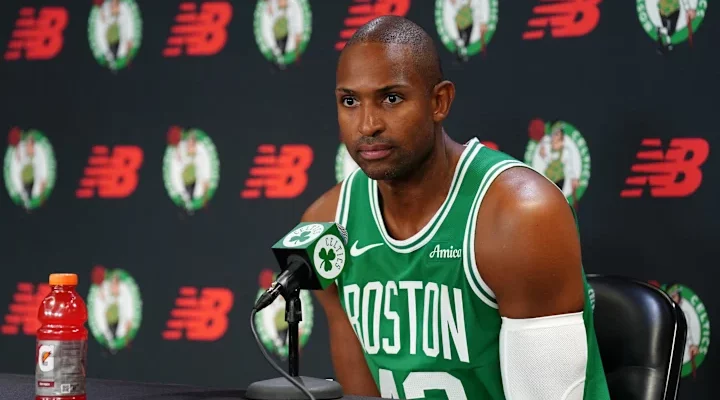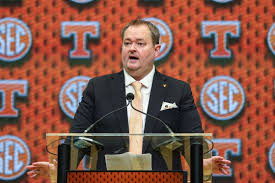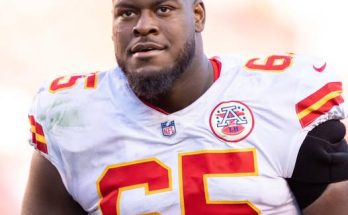Al Horford’s quiet departure from the Boston Celtics may not have come with a grand press conference or emotional farewell tour, but make no mistake—it is one of the most revealing and consequential developments for the team’s immediate and long-term future. Horford, the seasoned veteran, locker room cornerstone, and defensive anchor, has been an integral part of Boston’s identity during their modern era. Now that he’s stepping away, whether through retirement or simply being phased out of the rotation, the ripple effect is both deep and wide. His absence explains everything about where the Celtics are headed in 2025, not just in terms of personnel, but philosophy, culture, and ambition.
At first glance, the Celtics appear to be running it back with their core intact. Jayson Tatum and Jaylen Brown remain the twin engines of the franchise. Kristaps Porziņģis, if healthy, is expected to play a larger role on both ends. Jrue Holiday’s championship acumen and Derrick White’s recent extension offer much-needed backcourt stability. But Horford’s departure leaves more than just a physical gap on the court—it signals a changing of the guard, a seismic philosophical shift in how Boston plans to contend moving forward.
Horford was not merely a player; he was a connective tissue, linking past eras of Celtics basketball with the present. When he first arrived in 2016, he represented the franchise’s pivot toward winning culture, veteran leadership, and strategic defense. He was never the flashiest name in a lineup but always one of the most important. His IQ, poise, and unselfish play allowed stars like Tatum and Brown to flourish without worrying about frontcourt stability. For all the highlight dunks and buzzer-beaters over the years, it was Horford’s communication, rotations, and quiet toughness that often defined the Celtics in crucial moments.
With him gone, the Celtics can no longer count on that security blanket. The franchise is no longer leaning on older veterans to guide the next generation—it is putting the weight of responsibility squarely on the shoulders of its stars. This means Tatum and Brown are no longer rising talents—they are the fully matured pillars of the Celtics’ identity. Horford’s absence doesn’t just mean more minutes for younger bigs; it also symbolizes a departure from the team’s safety-first ethos. They’re going bold now, faster, younger, and perhaps more volatile.
The blueprint for Boston’s next chapter is rooted in calculated aggression. With Horford gone, the Celtics are pushing all their chips toward a dynamic, switch-heavy, high-ceiling brand of basketball. This is where Porziņģis becomes key. When healthy, he offers an entirely different skill set than Horford. He stretches the floor better, scores more prolifically, and blocks shots at a higher clip. But he lacks Horford’s discipline and positional awareness. The Celtics aren’t necessarily replacing Horford with a like-for-like player—they’re overhauling the concept of their frontcourt.
That overhaul comes with risk. Porziņģis’ injury history is well-documented, and counting on him to play a full, grueling season is more hope than certainty. Behind him, Boston will have to rely on unproven or inconsistent bigs like Neemias Queta or even go smaller with lineups featuring Tatum at the four. None of these solutions offer the assurance Horford once brought. But the Celtics seem willing to make that trade. In essence, Horford’s departure has uncloaked their hand. They’re all-in on the now, betting on talent and versatility rather than continuity and reliability.
Culturally, Horford’s absence is even more impactful. He was a respected voice in the locker room—never the loudest, but often the most trusted. Younger players looked to him for guidance during slumps. Coaches leaned on him for on-court decision-making. Even players like Marcus Smart, long considered the heart of the team, often deferred to Horford’s judgment in moments of crisis. Without him, the Celtics are entering a new leadership dynamic. Tatum and Brown, once the mentees, are now the mentors. This is their team in every sense—glory and failure alike will now fall at their feet.
How they respond will be telling. If they embrace the role and elevate their communication and responsibility, the Celtics may become even more dangerous. Tatum especially has shown flashes of emerging as a vocal leader, and this offseason has been one of his most focused yet. The Olympic exposure, injury rehab, and added team responsibilities are all shaping a player who understands the weight of being the guy. Brown, fresh off an All-NBA season and a Finals MVP-level performance, also seems ready to take on more than just scoring duties. But leadership isn’t automatic. It must be earned and practiced. Without Horford to guide the room, any internal conflicts or identity struggles will be exposed quickly.
Horford’s departure also reframes how Boston builds its roster this season. Without his veteran minimum salary anchoring the rotation, there’s more pressure on the front office to find cost-effective depth. Brad Stevens and his team have been aggressive in recent years, acquiring big names and making tough decisions. But now they must prove they can sustain success without relying on familiar stabilizers. That might mean a consolidation trade, packaging young assets or mid-tier salaries for another contributor. Or it might mean developing someone like Jordan Walsh into a reliable rotation player. Either way, Horford’s void forces action—it removes the luxury of standing pat.
The Celtics’ championship window remains wide open, but the nature of that window has changed. It’s no longer about maintaining a delicate balance between youth and experience. It’s about maximizing every ounce of peak performance from a top-heavy, high-salaried roster. Horford was the last bridge to the team’s more methodical, defense-first past. Now, Boston seems ready to embrace pace, space, and star power above all.
That transition also comes with psychological implications. The 2024 championship run, as magical as it was, had Horford’s fingerprints all over it. His performance in pivotal playoff moments—guarding Giannis, stretching the floor against Miami, directing traffic against Denver—was vintage leadership by example. With the target on their back now as defending champions, Boston must defend its crown without one of its most calming presences. That’s easier said than done. Teams will come at them harder, more aggressively, with new scouting insights and revenge on their minds. Every mistake will be magnified. Every crack in chemistry will be scrutinized.
In some ways, Horford’s departure feels like the end of a Celtics era defined by trust, fundamentals, and longevity. But endings are also beginnings. Boston is not shrinking from this reality—they’re leaning into it. They’re betting on Tatum’s complete evolution, Brown’s killer instinct, and Porziņģis’ versatility. They’re surrounding their core with two-way guards and hoping internal development fills in the margins. It’s a bold approach, one that may yield multiple titles—or combust under the weight of expectation and injury. But at least now, the strategy is transparent.
Al Horford was never about flash or noise, and so it’s fitting that his exit comes not with fireworks but with quiet clarity. His absence doesn’t just leave a hole—it shines a light on everything the Celtics are willing to risk to win again. In doing so, it reveals their true direction: full throttle, no safety net, and all in on the stars they’ve trusted to lead them into the future. Whether it ends in triumph or turmoil, we now know what this next chapter of Boston basketball will be. Thanks to Horford’s departure, everything finally makes sense.



